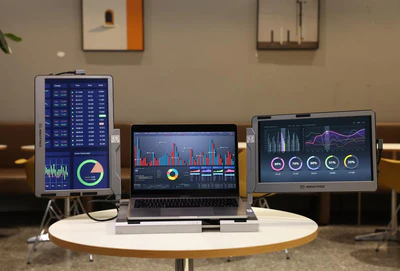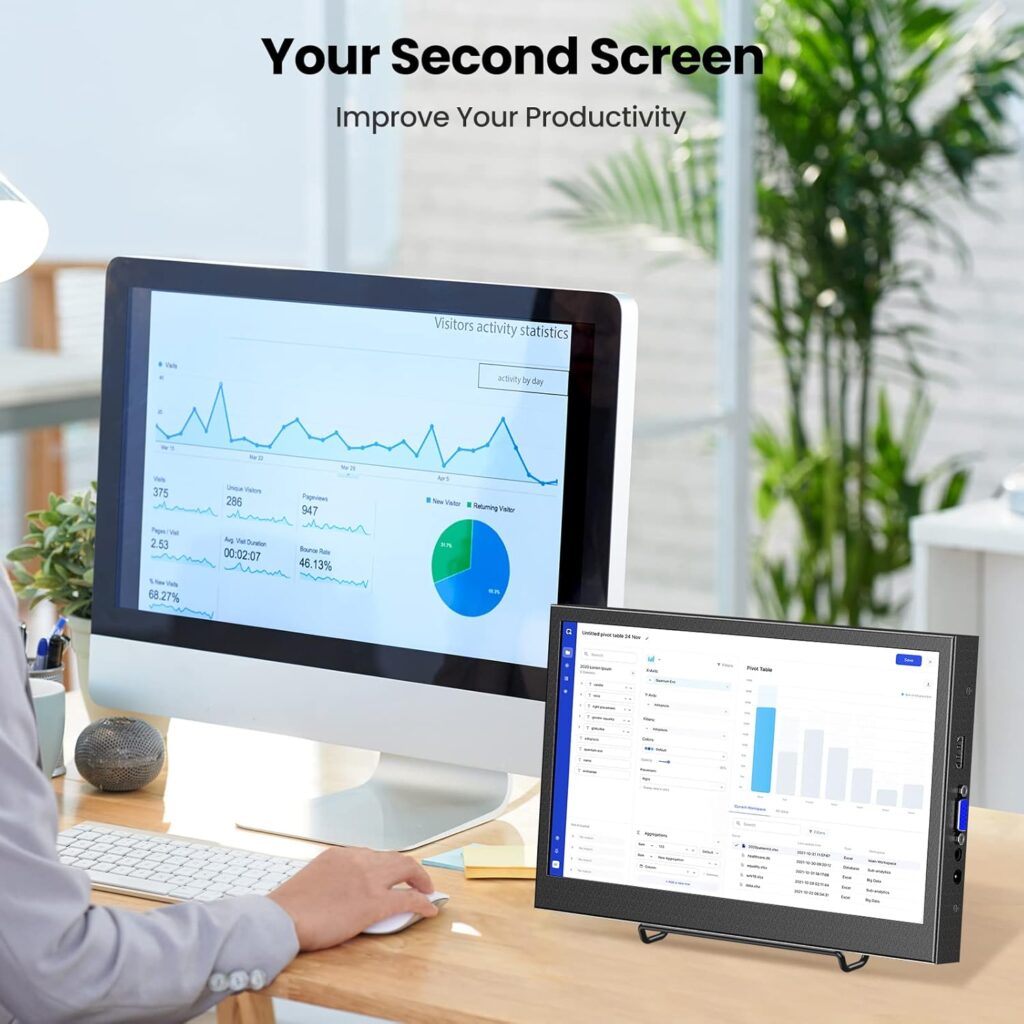Introduction
When it comes to gaming, every detail counts—including the cable connecting your monitor to your PC or console. The right cable can make a big difference in resolution, refresh rates, and overall responsiveness. With gaming monitors becoming slimmer and more efficient, thin monitors and USB powered monitors are now more common than ever. That’s why choosing the best cable for your setup is crucial. This guide will help you navigate the different options and find the one that maximizes your gaming experience.

HDMI: A Standard Choice for Gamers
HDMI (High-Definition Multimedia Interface) is one of the most popular options for gaming monitors. It carries both audio and video in a single cable, making setup easier. The latest HDMI versions, such as HDMI 2.1, support 4K resolution at 120Hz and even 8K gaming under certain conditions. If you’re using a thin monitor, HDMI is often a reliable choice because of its wide compatibility.
Pros:
- Supports high resolutions and refresh rates
- Transmits both audio and video
- Works with gaming consoles, PCs, and most modern devices
Cons:
- Older versions (e.g., HDMI 1.4) have lower bandwidth limitations
- Adaptive sync technologies like G-Sync and FreeSync work better with DisplayPort
DisplayPort: Best for High-Performance Gaming
For serious gamers who prioritize high refresh rates and smooth gameplay, DisplayPort is often the best option. It offers more bandwidth than HDMI, which allows for higher frame rates at high resolutions. DisplayPort 1.4 supports 4K at 144Hz, and newer versions can handle even more with compression. Many USB powered monitors also support DisplayPort over USB-C, making it a flexible choice for those who want a streamlined setup.
Pros:
- Supports higher refresh rates and resolutions
- Works well with G-Sync and FreeSync
- Offers more bandwidth than HDMI
Cons:
- Less common on gaming consoles
- Requires dedicated ports on both the monitor and GPU
USB-C: The Future of Monitor Connectivity
USB-C is becoming a game-changer, especially for thin monitors and USB powered monitors that prioritize efficiency and minimal cable clutter. Many high-end gaming monitors now support USB-C, allowing a single cable to handle video, audio, and power at the same time.
Pros:
- Reduces cable clutter by combining video, audio, and power in one cable
- Ideal for portable and USB powered monitors
- Supports DisplayPort over USB-C for high-performance gaming
Cons:
- Not all USB-C ports support video output
- Requires compatible hardware for full functionality
VGA and DVI: Outdated but Occasionally Used
VGA and DVI were once standard for gaming but are now largely outdated. VGA is an analog connection that cannot handle high resolutions or refresh rates, while DVI lacks support for modern adaptive sync technologies. If you’re using an older thin monitor, you may still encounter DVI, but upgrading to HDMI or DisplayPort is strongly recommended.
Pros:
- Still found in older monitors and budget setups
- Can be used with adapters for compatibility
Cons:
- Limited resolution and refresh rate support
- No built-in audio transmission
Choosing the Right Cable for Your Gaming Setup
Here’s what to consider when selecting a cable:
- Resolution & Refresh Rate: Higher refresh rates require cables with greater bandwidth, such as DisplayPort or HDMI 2.1.
- Adaptive Sync Compatibility: If you’re using G-Sync or FreeSync, DisplayPort is generally the better choice.
- Port Availability: Check which ports your thin monitor or USB powered monitor supports before making a decision.
- Cable Management: USB-C helps reduce cable clutter by combining power and video into a single connection.
Conclusion
Your gaming experience depends on more than just your graphics card and monitor—the right cable ensures that you’re getting the best performance possible. Whether you’re gaming on a high-end PC or using a USB powered monitor, selecting the correct connection type can significantly impact your visuals and responsiveness. HDMI and DisplayPort remain the most widely used options, while USB-C is becoming an all-in-one solution for thin monitors. Understanding your monitor’s capabilities and your gaming needs will help you make the best choice, so you can focus on enjoying every moment of gameplay.
About ONext
Onext Portable Monitor
Onext, founded in Shenzhen in 2009, has been committed to the development and production of portable monitor, laptop extender screen, gaming monitors and accessories, a high-tech enterprise engaged in the development, manufacturing and sales of digital intelligent products over 15 years.we adheres to the concept of “Functional and High-efficiency”, provide professional, intelligent and efficient office experience to every enterprise.
